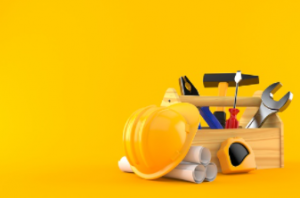A toolbox is a container to store, transport, and protect the user’s tools. They can be used for a hobby, trade or DIY, and the contents differ greatly with each user’s skill set. For most people, though, a toolbox is just that – a container to store their tools and accessories. But what are the best tips for buying one? Here are four of our top recommendations for choosing a toolbox:
 Toolboxes can vary in size from very small to extremely large. Some are strictly for storage, while others are designed more for the organisation. Many are built for convenience, but there are some excellent features available in higher-end models. Some have built-in drawers for additional storage, trays for hanging equipment, doors with locks, or secret compartments for storing important tools and materials. Some even have slides on the bottom of the lid for easy access to the drawers and, of course, trays for holding small tools.
Toolboxes can vary in size from very small to extremely large. Some are strictly for storage, while others are designed more for the organisation. Many are built for convenience, but there are some excellent features available in higher-end models. Some have built-in drawers for additional storage, trays for hanging equipment, doors with locks, or secret compartments for storing important tools and materials. Some even have slides on the bottom of the lid for easy access to the drawers and, of course, trays for holding small tools.
Tip number one when buying an aeg-tool-box: make sure it fits your needs. How much storage space do you need? What tools are you likely to store? Are you buying one to store household items or specialised equipment like drills? Do you need a locking mechanism for the storage space?
The second tip when buying a toolbox is to think about the aesthetics of the box. I prefer tool chests made of solid, durable material and come in various colours, sizes and finishes. Many are made of plastic or other lightweight material, while others are finished wood veneers equipped with saw-tooth handles. It’s important to know what’s important to you.
The third tip when buying toolboxes is to consider the size. When it comes to storage space, you want something large enough to accommodate what you need. A general rule of thumb is that the fewer tools you store, the larger the toolbox. Many toolboxes are large enough to hold hand tools, a screwdriver set, a screw gun, hammers, wrenches and pliers. Depending on how much you use your storage space, you might want to invest in one with several drawers or compartments as well. This will allow you to organise your tools better and make your workday easier.
The fourth tip is to think about whether you will be using your storage capacity frequently. Many people get plastic tool boxes for special occasions or every so often. If you plan on using this box regularly, you should consider investing in one that is sturdier and more resistant to moisture and impact. You don’t necessarily want an aeg-tool-box that is too flimsy, either. After all, there’s no point packing away your tools when they’re going to fall out of the box due to stress or if they can’t be easily accessed.
The last piece of advice we have for you is to consider the type of surface you’d like your plastic toolboxes to be installed on. While wooden and metallic surfaces are easily assembled, you’ll find the mechanical components of wooden tool boxes more reliable and strong. The trick is to look at the surface material. For example, stainless steel toolboxes are more sturdy than wooden boxes, but they can’t be sanded, stained or painted. If you’d prefer a wooden surface, go with a clear laminate or wood veneer, but be sure to cover the exposed parts with a plastic protective coating, so the box stays rust-free.
If you follow these tips, you should have an easy time finding the right toolbox for your needs. It doesn’t matter whether you’re shopping for your first portable toolboxes or if you’ve been buying them for years. Keep these tips in mind, because they will surely help you find the best solution to your problem. There are many good brands out there, so you shouldn’t have any trouble finding one that’s both durable and stylish.